|
|
Suitability for thermoplastic materials to be in direct support of live parts, below are the suitable properties for each flammability, Per UL 746C, Table 8.1
+ r% \6 p6 N! k3 B, r% I# u可以用来直接支撑带电体的塑料其HAI/HWI/CTI的指数需符合下表。$ |/ V0 d2 ]( L% C7 s
V-0 V-1 V-2 HB
* g) O$ |9 A8 d! gHAI 3 2 2 16 A+ m/ o# Z, J" K$ @& s0 J" k- y
HWI 4 3 2 2
3 I3 j1 y+ N. j4 Y) E2 ICTI 4 4 4 4
/ p- H; H) i, |9 M7 w: c4 g8 q6 a6 \
) H& v: m: M; S6 U9 OSuitability for thermoplastic materials to be in direct support of live parts, below are the suitable properties for each flammability, Per UL 746C, Table 8.1
- y/ Y; n* A! V* D# a可以用来直接支撑带电体的塑料料其HAI/HWI/CTI的指数需符合下表。
l/ ~+ [: G2 B5 P" K; b- j9 \
) \* L& {/ B# p& T: t! X V-0 V-1 V-2 HB( }" K1 E" q( d- Q6 ^( W2 E! e7 b7 V N
HAI 3 2 2 1 G0 v, s9 G1 F, ]. k
HWI 4 3 2 2
8 Q( K* p, w7 y+ J$ _4 zCTI 4 4 4 4
- \# [/ V8 {& [- v0 V数字越小,代表HAI/HWI/CTI的性质越好。' {' y" l$ \7 I( H
例如:奇美PA-766 UL黄卡摘录
. X4 I& ~) F0 A/ P, l* Q H D
" M. Y4 y0 x* L3 x2 K: v Min. H H R T I V 4 C
, U% m) z2 {3 R2 i" m Thk Flame W A Elec Mech T 9 T
- S! i# F( v+ y+ S6 k" u6 lMaterial Dsg Color mm Class I I Imp Str R 5 I) Q p/ W2 W! }8 _; g& V
PA-766 ALL 1.5 V-0 1 0 60 60 60 0 7 22 h# _& y# N6 }4 g% Z2 n
2.5 5VA - - 60 60 60 5 o3 e& b- m( q' w5 _& x/ z
3.0 5VA 0 0 60 60 60 " H+ c7 e! o7 l. F* C+ N. g
在最小厚度大于1.5mm时,其耐燃等级是UL 94V-0, HWI=1、HAI=0、CTI=2,因此看回上表HWI<4、HAI<3、CTI<4,符合上表,所以PA-766在最小厚度大于1.5mm时可以直接支撑带电体。
& @! i1 J6 z& [$ H但若黄卡中HAI、HWI值为 “-“,则代表厂商申请此料时未做相关测试,所以是不能认可为可直接接触带电体的。
4 E6 r* s' O' \Hot-Wire Ignition (HWI; ASTM D3874, IEC 60695-2-20 ) — Performance is expressed as the mean number of seconds needed to either ignite standard specimens or to burn through the specimens without ignition. * z6 D2 c& k0 q$ Z k
HWI Range/ w0 A V7 ^3 q4 Q1 L2 p
Mean Ignition Time (in sec) Assigned
8 `& t5 P! {0 T2 lPLC
# l# ~3 _/ x6 Y3 ]* L' b2 X( d @/ n0 z120 and longer 0
$ F5 D# g2 A7 _6 p60 through 119 1% h2 z8 Y3 H. ` M# E
30 through 59 2; O4 t' F: {9 U) c# o2 A; C) I
15 through 29 3
* N, b( O2 z3 Z* v6 M1 A% P% i7 through 14 4: g/ C' E O" z' `/ Z' ?8 S. H
Less than 7 5
/ h0 Y# j* k) Y" u, u$ [- oHigh Current Arc Ignition (HAI; ANSI/UL 746A ) — Performance is expressed as the number of arc rupture exposures (standardized as to electrode type and shape and electric circuit) that are necessary to ignite a material when they are applied at a standard rate on the surface of the material.3 o) z) ] x; c4 M
HAI Range ) p9 W) b* C1 {$ e& c( H
Mean Number of Arcs # }4 Q; M2 r/ y1 g- @7 f" Q
to Cause Ignition Assigned
0 `! g! ^1 ^! b+ A8 [PLC3 c# s) G1 P& Q, r5 W
120 and greater 0
% ~, B( a( o* Z/ _% n& v60 through 119 1. `8 k& w3 y. y1 S" m0 I
30 through 59 2' n: R1 a: S/ ^. P6 @
15 through 29 3
9 Z& J3 `+ [7 G f- ^Less than 15 4( N1 x, Y0 M( ^8 ^% T, J; I5 ^1 ?
Comparative Tracking Index (CTI; ASTM D3638 ) — Expressed as that voltage which causes tracking after 50 drops of 0.1 percent ammonium chloride solution have fallen on the material. The results of testing the nominal 3 mm thickness are considered representative of the material's performance in any thickness.# K( y& t2 B; k& @- |" x
CTI Range
6 V' b/ R& ]5 ?8 J$ _( uTracking Index6 s! z/ }1 X8 [- h9 h3 ]4 d( v- n
(in volts) + R- H5 B: M2 H
Assigned% F. f% [- z, I3 w
PLC
0 m/ M' ^( L) l ]$ p( c/ T600 and greater 0( u. Q6 W: d0 ]9 S
400 through 599 1$ h; k3 S7 `: l6 `; ?3 _% P
250 through 399 2
. }5 n3 h/ k- Y& ~2 ^8 E Q7 n175 through 249 3) I0 P# G/ a2 y
100 through 174 4 O9 S. P! o) D; H" o: h) Y( W
Less than 100 5" O9 g' Z$ ~) g9 q) U' _
3 s+ x; X0 u! P6 o黄卡的说明COLUMN HEADING ABBREVIATIONS
0 q; Q+ P3 K' ?' q% l6 ]/ S# Z. b( bThe following abbreviations may be used in the column headings in the individual Recognitions:0 Y# f9 l7 B6 N% G. k# K
Abbreviation Term
" \3 n( s5 V! ~; f- b" eFlame Class ANSI/UL 94 Flammability Classification
6 l0 [" L5 F: P4 ]4 K* {6 gMaterial Dsg Material Designation+ R# y. P; r o3 E) G/ I, Z
Col Color! ~3 u5 d# ~! Z, `/ }, ?1 ], @" Q
Min Thk Minimum Thickness- g' V' ?; a( j, [8 l. v ]
Thk Rg Thickness Range
I, T' `! e" _* N, Q B" qDen Range g/cc Density Range, g/cc
1 _# W# f+ [; _. G1 tElec Electrical
- l( r1 t g6 l. ?6 cRP Radiant Panel
; n/ r+ F, [6 H2 o+ V- q* aRTI Relative Temperature Index
! I5 e; Z: v( }* m* P$ L, u/ m3 uHWI Hot-Wire Ignition6 N8 D- M7 e2 b; A0 A9 o; q
HAI High Current Arc Ignition/ s, D7 o2 \/ P* e% p
HVTR High Voltage Arc Tracking Rate
+ ?; v2 g0 {5 l* k, o- t* N4 N6 [6 {D495 Arc Resistance
% H% D+ `* K# i- oCTI Comparative Tracking Index
' G+ A/ N' B& ?Mech Mechanical" z* D3 @, t- l2 H
Tnsl Tensile
1 {: F z% w( V8 W; |Elong Elongation. m( r: n0 x$ e
Str Strength; p7 {( @2 f( `& M
Imp Impact |
|



 窥视卡
窥视卡 雷达卡
雷达卡 发表于 2011-1-25 15:02
发表于 2011-1-25 15:02
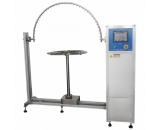

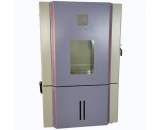

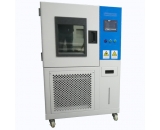

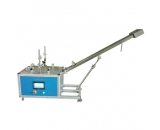

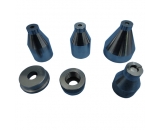






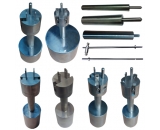
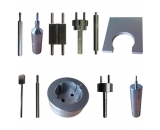
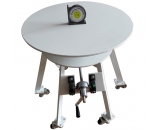
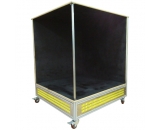

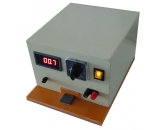
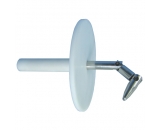
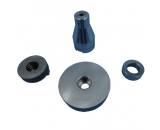
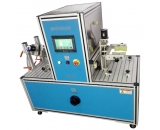
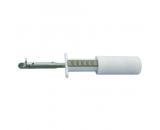
 提升卡
提升卡 置顶卡
置顶卡 沉默卡
沉默卡 喧嚣卡
喧嚣卡 变色卡
变色卡 抢沙发
抢沙发 千斤顶
千斤顶 显身卡
显身卡














